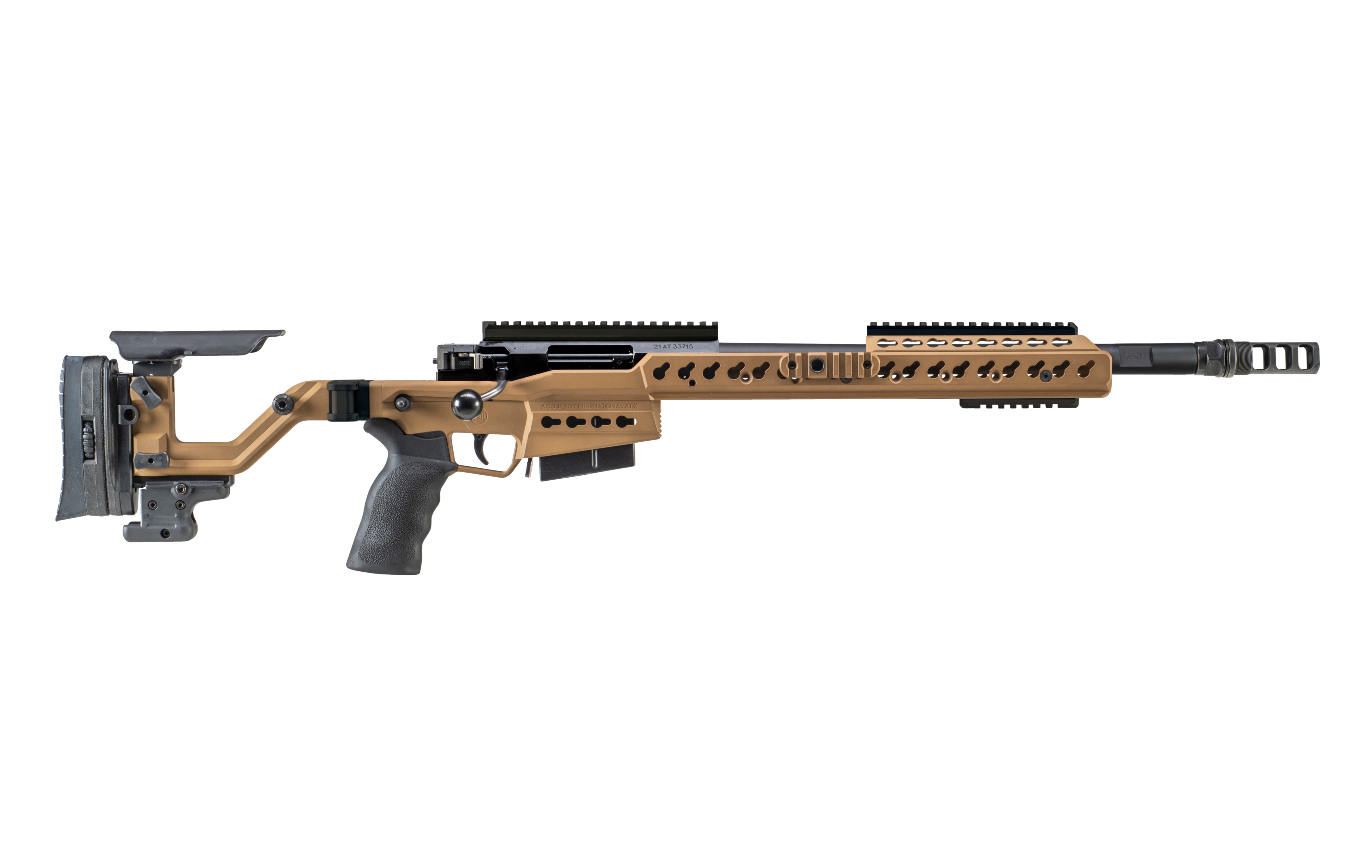We have already been able to gain experience with other .50 BMG sniper rifles at long range distances in the past. For example, with the Bushmaster BA 50 or the M95 bullpup bolt-action rifles. The AX50 bolt-action rifle was developed by Accuracy International (AI) in cooperation with the Naval Surface Warfare Center (NSWC) and introduced to the U.S. Navy SEALs around 2007.
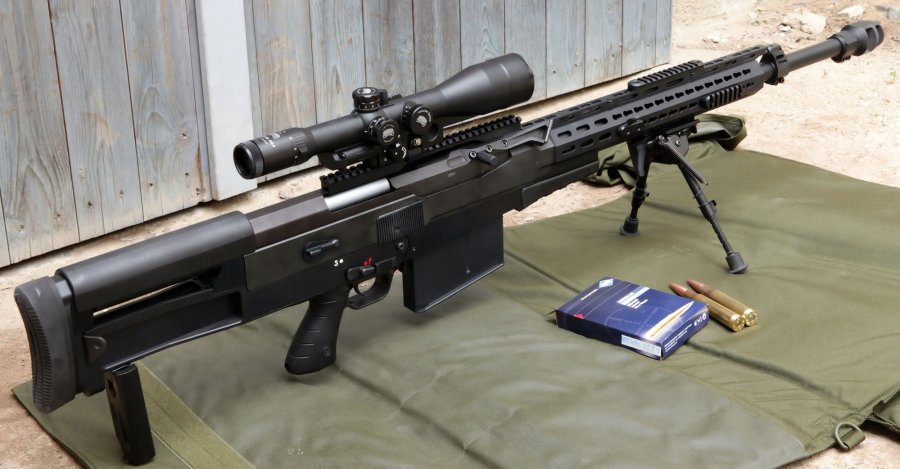
The .50 BMG cartridge: a 100-year-old ammunition giant
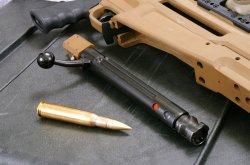
In 1918, the legendary John M. Browning was commissioned to develop a heavy machine gun and cartridge for engaging hard targets. Three years later, the work was completed, the Browning M2 machine gun still in use today was born, and the .50 BMG was officially introduced to the U.S. armed forces in 1923. While the M2 ball load introduced in 1939 could penetrate "only" 19 millimeters of steel at 500 meters, the M33 ball load in 1947 improved the penetrating power only marginally to 21 millimeters. Almost 50 years later, in 1994, the M903 SLAP (Saboted Light Armor Penetrator) significantly improved performance again, cracking 34 millimeters of steel at 500 meters. This performance was possible because a .308 hard-core projectile weighing about 180 grains was loaded into a .510 plastic cup, which then allowed an extreme velocity of 1,372 m/s to be achieved. Along with other full-blown sniper rifle cartridges such as .300 Winchester Magnum (7.62x67 millimeters) or .338 Lapua Magnum (8.6x70 millimeters), rifles in .50 BMG are highly prized by the military as "anti-material weapons" because of their range, performance and destructive power on target. After all, the bullet offers ample design scope for ammunition specialties such as hard core, tracer or explosive versions.
Heavyweight sportsmen: long range shooting with rifles in .50 BMG
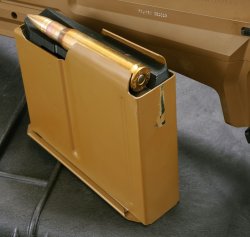
The accuracy of the .50 BMG at really long ranges aroused the interest of sporting long range shooters early on, which led to the founding of the "Fifty Caliber Shooters Association" (FCSA) in the USA in 1985. Here, shooters compete in various categories and gun classes at distances of 600 yards (548 meters), 1,000 yards (914 meters), 2,000 yards (1,829 meters) and 3,400 yards (3,109 meters) using competition rifles and specialized equipment. The results achieved leave even the connoisseur in disbelief. For example, the current world record for the smallest five-shot group at 1,000 yards is 1.955 inches, or 49.6 millimeters! Shot by Lee Rasmussen in the "Heavy Gun" class on the Fourth of July, 2009. The feasible shooting performance even beyond the 2,000 meter mark is no less impressive: for example, multiple 1,000 yard world champion Skip Talbot already shot at a distance of 2,163 meters at a 72”x72” (183x183 cm) target in 2001 and realized a 5-shot group of 55.98 inches (142.2 centimeters), with three shots together at 17.99 in/45.7 cm!
Cooper sends his regards – The history of Accuracy International

AI co-founder Malcolm Cooper started his impressive shooting career with a rimfire rifle in New Zealand, where his father was stationed with the Royal Navy. After winning the Olympic gold medal in the three-position event in Los Angeles in 1984, he repeated his triumph four years later in Seoul in 1988. He won all five individual titles at the 1985 European Championships and set no fewer than five world records at the World Championships the following year. Together with his wife Sarah Cooper, he also won team gold at the 1986 Commonwealth Games in Edinburgh. The exceptional talent died on June 11, 2001, at the age of 54. Only at first glance it may seem surprising that a successful top athlete in Olympic shooting disciplines, of all things, should have had a lasting influence on and changed sniping in the military and law enforcement world. However, the adjustment and customization options of the stock and trigger unit of a rimfire competition rifle support the repeatable precision work of the shooter, which is also an essential factor for professional snipers.
Moreover, since its founding in 1978, AI of Portsmouth, Hampshire, has been specializing exclusively in the manufacture of sniper rifles, a pioneer in the field of chassis design, which is booming today. The precision tools of the "Artic Warfare" (AW) and "Artic Warfare Magnum" (AWM) series are now rightly regarded as groundbreaking classics. British snipers have been using the L96A1 model in 7.62x51 NATO since 1985. They have always had a alluminum chassis to which all other components are attached. Here, an additional bedding can be dispensed with because the solid receiver is bolted directly to the aluminum chassis, which in turn significantly stiffens the barrel trunnion. Due to the great success of AI in the international law enforcement and military world, the AI rifles were the triggering starting shot for further developments by other manufacturers, and today there are countless series-produced bolt action rifles and retrofit solutions with an aluminum chassis system.
The AX50 ELR bolt action rifle from Accuracy International in detail
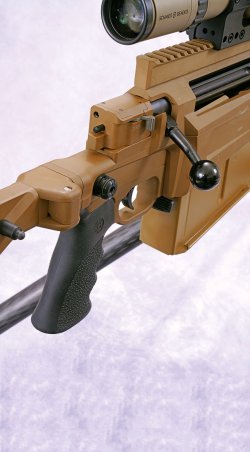
AI has been extremely active in the recent past. The latest sniper rifle is the AX50 ELR, which is now being discussed here. Milled from a high-alloy tool steel, the AX50's mighty receiver, 13”/33 cm long, has its flat underside permanently bolted, wedged and fixed to the alluminum chassis for the highest possible stability and repeatability when firing. A special feature of this system case is the MIL-STD-1913 optics rail on the top, which has an extremely high forward tilt of 45 MOA. It is not for nothing that the Britosh sniper rifle bears the abbreviation ELR in its further model designation, because it is designed for "Extreme Long Range" use. Inside the massive receiver we find a 11”/28 cm-long, fluted bolt with a diameter of 1.181”/3 cm, also made of high-strength steel, as well as six locking lugs arranged in two rows, which lock into the barrel extension.
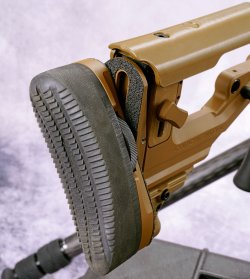
Typically, the ejector is positioned on the opposite side of the extractor in a bolt-action rifle. However, on the AX50 ELR bolt face both mechanical components are positioned closer together, as the ejector pushes the huge .50 BMG case upward to catapult it safely out of the ejection port. The 27" long barrel, made of stainless steel with 1-15" twist, is screwed into the action with a thread length of 1.53”/39 mm. On the fine muzzle thread sits an additional clamped and screwed three-chamber muzzle brake, which proved its effectiveness in the later field test. The spring-loaded length adjustment of the folding, fully adjustable stock is particularly impressive. Pressing a button on the left side under the height-adjustable cheek rest causes the buttpad to spring out and adjust to the shooter's position. The buttpad can also be adjusted for tilt. The angle of the freestanding AR-15 pistol grip has been modified to achieve a better contact with the shooting hand in typical firing positions, which proved to be very positive in our field testing.
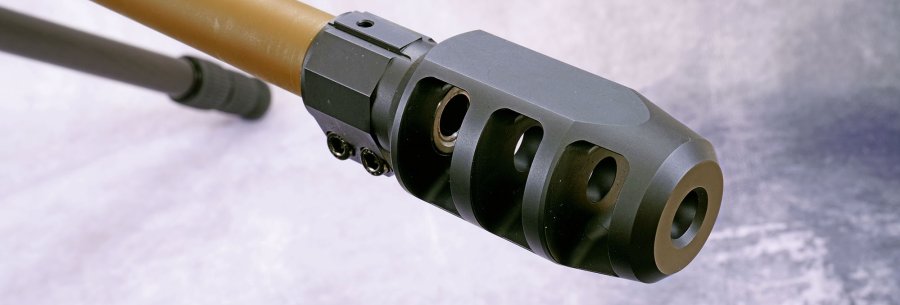
Test at the shooting range: what can the Accuracy International AX50 ELR do in practice? Groups at 300 and 500 meters
A .50 BMG is also a challenge these days in terms of sourcing around ammunition and loading components. Fortunately, Heinrich Fortmeier provided us with his loading press and dies. The German ammunition manufacturer Sax also thankfully supplied us with factory ammo with 600-grain and 745-grain MSG sporting bullets as well as the same bullets for our handloads. The solid brass alloy bullets developed and manufactured by Sax have special grooves, both to provide maximum guidance in the case neck area and to allow the bullet to be as close as possible to the rifling of the barrel for maximum accuracy. Due to the bullet design as a low-friction driving band projectile, the resistance of the bullet into the grooves and lands of the barrel is significantly reduced and thus also the barrel wear is considerably reduced.
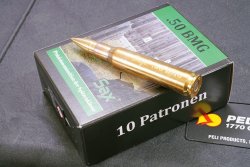
Given that a single factory cartridge in .50 BMG costs around 12 to 13 euros, civilians and sport shooters can hardly avoid reloading. In this regard, the prices for the Sax match bullets are perfectly acceptable at 246 euros/100 pieces for the 600-grain MSG and 267 euros/100 pieces for the 745-grain MSG. We were amazed when we were able to punch a 0.669”/17-mm group into the cardboard with our hand-loaded 600-grain Sax MSG bullet on the 100-meter line. Even though at this short distance, using the AX50 ELR feels like using an excavator in the sandbox at the children's playground. After the 100-m test, we went to the 500-meter Rosenberg 1 indoor facility in Marienberg. Here we achieved the 300- and 500-m top groups of 2.283”/58 mm and 3.858”/98 mm respectively, with Sax 745-gr MSG factory ammunition. By the way, we had calculated the bullet drop using the "Strelok Ballistic Calculator" smartphone app.
Accuracy International AX50 ELR specs and price
| Caliber: | .50 BMG |
| Action: | Bolt action with 60-degree bolt throw and six locking
lugs that lock into the barrel |
| Barrel: | 68-inch stainless steel match barrel with 1-15"
twist and three-chamber compensator |
| Stock: | AX alloy chassis with folding stock with height adjustable cheek piece and length, height and tilt adjustable buttpad, free standing AR-15 pistol grip, alloy handguard with KeyMod slots and ARCA interfaces for mounting tripods and additional equipment. |
| Magazine Capacity: | 10 rounds |
| Trigger: | Adjustable two stage trigger; measured trigger pull
weight: 2,082 g |
| Safety: | 3-position safety on the bolt, acting on the firing pin |
| Overall Length: | 1,140 mm to 1,415 mm (with stock folded/unfolded) |
| Weight: | 26.5 lb/12 kg (empty, without scope, no rails and no additional equipment). |
| Price: | 11,758.62 euro |
Test wrap-up: our impression of the AI AX50 ELR in .50 BMG
With the AX50 ELR, the British manufacturer once again proves that it is one of the world's leading specialists in the realm of modern sniper rifles. Unfortunately, this also has its price, because the gun in the basic caliber .50 BMG costs around 12,000 euros. In addition, the manufacturer offers interchangeable kits in .375 CheyTac, .408 CheyTac or .416 Barrett calibers. In a word: impressive!
Text: Stefan Perey / Michael Fischer



